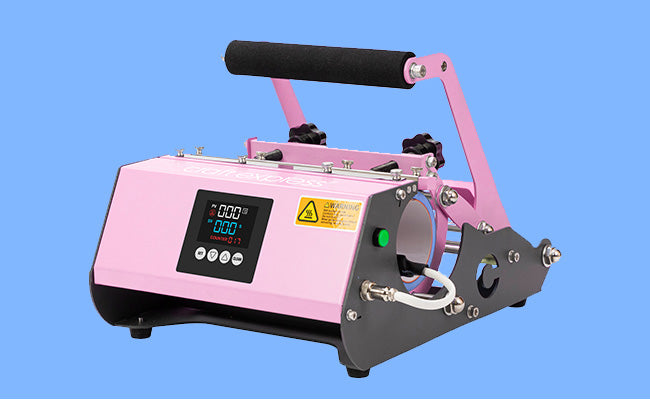
Etsy vs. Shopify: Where Should You Sell Your Handmade Products?
Choosing the right platform to sell handmade products is one of the most important decisions for craft business owners. Etsy and Shopify are two of the most popular options, but each comes with distinct advantages and challenges.
This guide compares Etsy vs. Shopify to help handmade sellers determine which platform is best for their business—or how to strategically use both to maximize sales and brand growth.
Understanding Etsy and Shopify
What is Etsy?
Etsy is a marketplace designed for handmade, vintage, and unique items. Millions of shoppers visit Etsy daily, looking specifically for handmade products, making it an excellent place for craft entrepreneurs to gain exposure.
-
Over 90 million active buyers
-
Easy setup—list a product and start selling
-
Built-in audience actively searching for handmade goods
What is Shopify?
Shopify is an e-commerce platform that allows sellers to build a fully customized online store. Unlike Etsy, Shopify gives complete control over branding, design, and pricing—but sellers must drive their own traffic.
-
No marketplace competition—your store, your rules
-
Flat monthly fee instead of per-item listing fees
-
More control over marketing, pricing, and customer experience
Key Difference: Etsy is like setting up a booth at a craft fair with built-in traffic, while Shopify is like opening your own boutique that requires active marketing to bring in customers.
Pros and Cons of Selling on Etsy
Pros of Etsy
Built-In Traffic and Customers
Etsy attracts millions of shoppers looking specifically for handmade products, eliminating the need to generate your own traffic.
Easy Setup
Sellers can launch an Etsy shop within minutes by uploading product photos, writing descriptions, and setting prices.
Trust and Credibility
Etsy has a strong reputation, which helps new sellers build credibility and make early sales.
Cons of Etsy
High Fees
Etsy charges several types of fees that can affect your profit margins:
-
Listing Fee: $0.20 per item
-
Transaction Fee: 6.5% per sale
-
Payment Processing Fee: 3% + $0.25
-
Optional Ad Fees: Up to 15% if Etsy promotes your listings
Limited Branding Control
All Etsy shops follow the same layout, with limited customization. You can't create a fully branded shopping experience.
High Competition
Your listings are displayed alongside those of your competitors. Popular designs may be copied, leading to price undercutting and visibility challenges.
Pros and Cons of Selling on Shopify
Pros of Shopify
Full Brand Ownership
You have total control over the website design, branding, and customer experience. No Etsy branding or competitor ads appear on your store.
No Listing Fees
Shopify charges a flat monthly fee (starting at $39), regardless of how many products you list.
Higher Profit Margins
Since there are no per-sale transaction fees beyond payment processing, you retain more revenue and have greater pricing flexibility.
Cons of Shopify
No Built-In Traffic
Unlike Etsy, Shopify doesn’t have a marketplace. You’re responsible for driving all traffic to your store.
Marketing and SEO Required
Success on Shopify requires effort in email marketing, social media, search engine optimization, and sometimes paid ads. Without consistent marketing, traffic may be low.
Etsy vs. Shopify: Which One is Right for Your Business?
Etsy is Best For:
-
Beginners looking for an easy, low-risk way to start selling
-
Sellers without a large marketing budget
-
Businesses that want access to a built-in audience
Shopify is Best For:
-
Business owners who want complete control over branding and pricing
-
Sellers ready to scale and build a long-term brand
-
Entrepreneurs willing to invest in traffic-driving strategies
Many successful craft businesses start on Etsy for quick exposure and gradually transition to Shopify to grow and strengthen their brand.
How to Use Etsy and Shopify Together for Maximum Success
Instead of choosing one platform over the other, many sellers use both to create a hybrid sales strategy.
1. Use Etsy for Discovery, Shopify for Branding
-
Keep your most popular products on Etsy to reach new shoppers
-
Offer exclusive products or promotions on Shopify
-
Add business cards or coupons in Etsy orders to drive traffic to your Shopify site
2. Capture Customer Emails on Shopify
-
Add an email opt-in on your Shopify store (e.g., “Get 10% off your first order when you subscribe”)
-
Use your email list to promote new products, flash sales, and seasonal launches
3. Run Social Media Ads to Shopify
-
Promote your Shopify store through Instagram, Facebook, Pinterest, and TikTok
-
Use custom landing pages on Shopify to create better ad experiences
This dual-platform approach leverages Etsy’s traffic with Shopify’s branding control and scalability—ideal for long-term growth.
Final Thoughts: Etsy vs. Shopify for Handmade Sellers
Choosing between Etsy and Shopify depends on your business goals, experience level, and marketing efforts.
-
Etsy is a great starting point for beginners who want easy access to a large audience.
-
Shopify is ideal for building a fully branded experience and keeping more of your profits.
Best of all? You don’t have to choose just one. Many top handmade brands use Etsy to gain visibility and Shopify to grow their brand and increase customer retention.
Action Steps for Handmade Sellers
-
If you're selling on Etsy, start planning or building a Shopify store as a backup and branding hub
-
If you're already on Shopify, focus on SEO and marketing to bring in consistent traffic
-
Test a dual-platform strategy to get the benefits of both exposure and ownership
Both platforms have unique strengths, and combining them can help you build a thriving handmade business with long-term success and loyal customers.




Leave a comment
This site is protected by hCaptcha and the hCaptcha Privacy Policy and Terms of Service apply.